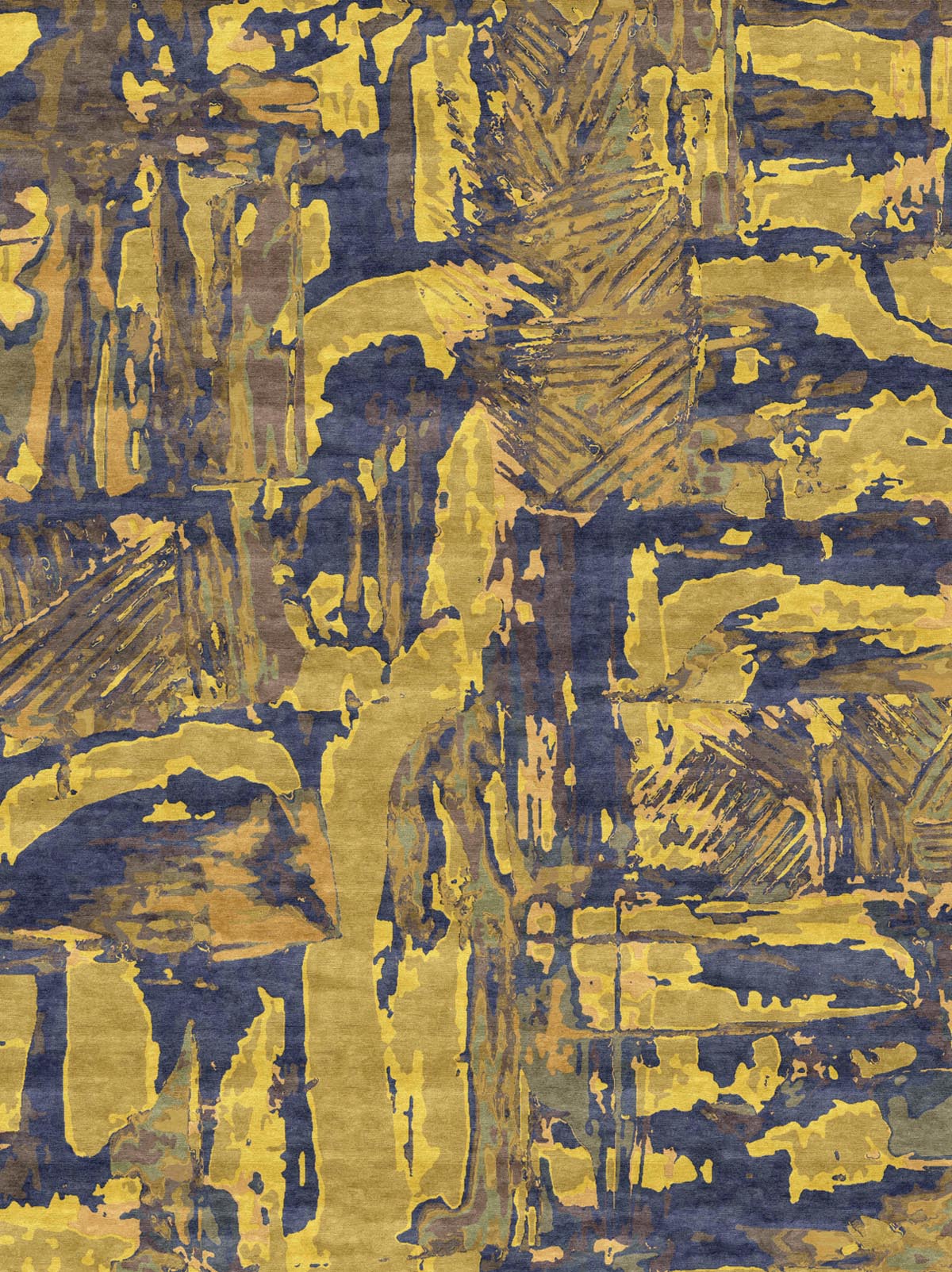How to Change an Industry: Malene B’s fight for representation in design
Artist and activist Malene Barnett in conversation with Jennie Wilde for Crea
INTERVIEW BY Kate Mctigue
After 20 years working in a creative industry, getting licensed, founding her own company, receiving accolades, getting published, and appearing on TV, Malene Barnett is finally having her moment. Why did it take this long? The script has always been the same: Malene pushes to express her black experience through her work; the industry turns a blind eye. If 2018 was the year institutions became forcibly aware that women and people of color deserve a seat at the table, design noticeably lags behind.
But that’s changing. Thanks to the persistent work of advocates like Malene, mainstream culture is beginning to acknowledge who’s left out of the conversation. Social media has given rise to strong communities and finally, the appeal for change has become big enough that it cannot be ignored.
After so much time spent fighting to be heard in an industry that just wouldn’t listen, Malene has forged a platform for her voice. And it is powerful.
Now, Malene joins us in conversation with friend and colleague Jennie Wilde, who has spent over 20 years in the global home furnishings industry. After quitting her job as a senior executive at one of the largest luxury providers to the trade, she is now working towards fulfilling her vision of aligning her work with her values. Malene and Jennie met at Choplet Ceramics in Williamsburg, and Malene went on to complete her residency at Greenwich House Pottery.
Kate How did you first meet?
Jennie I remember having a very heated conversation in the glazing room about art, design, commercialization. We had different points of view, and a lot to talk about.
Malene Your friend had given you a book, In the Company of Women, and told you, 'You need to meet everybody in the book.' That's when I said 'Oh! I'm in it!' [Laughs]
J I was going through a career change, and when I met you I felt I’d achieved one thing on my journey: I'd met one of these amazing women in the book.
Above Malene at home with a sample of rug color swatches, Photo: Julia Hembree for BK Magazine
Above: Malene’s King woman, Source: maleneb.com
K When did you first get involved professionally, in the guidance or mentorship of one another's careers?
M I was also going through a change — taking a step back, focusing on my fine arts. I enlisted Jennie’s help in the transition. We went back and looked at all my old work, and I realized I’d lost the authentic voice of my culture, of being a woman — a black woman. One of my first carpet lines was inspired by a trip to Senegal. I got so much pushback from it. I was trying to fit into an industry that didn’t accept or appreciate my work. I remember you said, 'Malene, what happened to this?'
J ‘Where is this girl? Can we bring her out?’ Then as your advisor, I needed you to teach me what it means — what your authentic black voice means. I thought I knew, but I didn't.
M That's part of the problem in this industry. Let's face it: the majority of people on the decision-making side are white male or female professionals. They don’t really know about black culture. We have all these descriptions of styles — ‘Art Deco,’ and ‘modern.’ Black culture is never a part of a conversation on modern design. It's just not. We're conditioned to speak about design and culture in certain ways. That’s why people like myself need to speak up and say, 'That's just not the reality. Can we discuss this a little further?'
J It takes a lot of courage to challenge those ‘norms’ that shouldn't be normal. Even when we met in the ceramics studio, I was doing some patterning that might have been ‘African-inspired’ in my mind. I stopped that.
M Oh, really?
J Once you and I started speaking, I decided to think about it — to do some research. I wasn’t any less inspired by the patterning or the color or the art, but I realized it's connected to a people, a culture that I am not a part of, and I wasn’t making that connection in a real way. To be really honest, I was complicit. I remember the piece of education that you gave me — the talk on white fragility. It was specifically calling out me and my peer group.
M Yes.
J We’re somewhere in the ‘white elitist’ dome who think we’re ‘good people.’ But because you made it all approachable, I listened and understood better. I realized my role. Now I’m figuring out how I change from complicit to, at the very least, aware. I don't know what the answer is, but that could be a first step.
M It’s gaining consciousness. For me, it was figuring out that we have this whole history — one that did not start with slavery, but with royalty! You start reading and learning how the system continues to project lies. Then you have to ask yourself, ‘What’s my role going to be?’
“People like myself who aren’t afraid to speak up need to say, 'That's just not the reality. Can we discuss this a little further?'“
J ‘The system’ is a key word here. It’s what's keeping this power structure in place.
M That's right. And the system is racism. It's not just perpetuated in design. It's in everything. In 1990, I went to art school at SUNY Purchase. Public Enemy was at the top of their game and Hip-hop had gained huge influence. I was reading books like The Autobiography of Malcolm X and Stephen Biko. I decided then that it was my duty to share the black experience as an artist because we had the power to showcase time and current events through our work.
Loïs Mailou Jones
(11/3/1905 – 6/9/1998)
is an African American artist, textile designer, and teacher who studied in Paris during the Harlem Renaissance.
My favorite class was African American Art History because it was the first time that I could study the artists of my people. Loïs Mailou Jones became my idol. I was like ‘Oh wow, it’s a black woman, and she's painting!’ That one class really encouraged me to say, ‘Yeah, I'm on the right path.’
When I transferred to FIT, I discovered textile design. I made sure all my projects were about black culture throughout the diaspora — every single one. We’d design a rug based on a folktale, I’d pick an African folktale. We’d create a flower design, I’d pick an African flower. Teachers would question me. They didn't know how to say it, but I knew where they were going. They didn’t want to see certain patterns. Thankfully I did have some teachers who supported me, and I graduated with the department medal, which was given to the top student.
Then, lo and behold, my first job out of college was designing African print fabrics. I started out doing what I loved!
J That first job must have felt like, ‘This is gonna be the rest of my life.’
M Yeah! But I got laid off after two years, and moved to a rug company as their first in-house designer. I had a bald head — my hair was really, really low. I was a sharp dresser, and I was really confident. The rugs weren’t anything I wanted to design, but my mother trained me well: you work and do the job. It's not about what you like. So I did that for 11 years, then left to start my own business.
In 2008, I said, ‘I'm gonna get my voice back again.’ I decided to make Malene B Atelier a real business — all about my travels, my heritage. Turns out, it was not a good year to start a business. [Laughs] I'm like, ‘I went to Senegal, here's the design; I went to India, here's the design; I have aboriginal art, here's the design.’ And buyers are like, ‘Mhmm, mhmm… How much?’ They didn't care about the story!
J Yeah, it was very much that environment.
M I put up with buyers’ changes to my designs for seven or eight years, but eventually I began to take the business back into my own voice. Then in 2016, I said, ‘All right. I'm not doing this anymore.’
J That was the shift to the artist.
M It took me a little while.
J The recession really changed a lot. It was a very different industry before that. More investment in the design of the products — more time, more care taken. It never shifted back, and I don't think it will.
Above Malene’s Acid Blueberry carpet design, Source: maleneb.com
What’s New, What’s Next
NEW YORK, NY
is an annual design showcase, criticized for the lack of diversity in its 2018 lineup.
M True. On the other hand though, I think social media — especially for black culture, for black people — has really created a platform for our voices to be heard.
J You can connect.
M There's no middle person.
J That's an amazing, beautiful thing.
M Social media allows you to speak the truth on many levels, and speak for those who are too scared to speak up.
J Your voice is unfiltered. It's coming directly from you. People can get behind you, can connect. It's a different way of seeing community.
M And it's a global thing. We're not relying on, say, being in New York. That’s the beauty. The biggest frustration is that it’s 2018, and we're having the same conversation. Look at the lineup of What's New, What's Next. It’s not about an event — it's about an industry-wide problem. These events continue to promote what they feel is important, and continue to show me that as a black woman in design, you don't care about me.
The D & D Building [Decoration & Design Building] just came out with their roster for their fall talk. Same thing. Same issue. I'm sitting here, like: I went to school, I got the degree, I work in the industry, I contribute, I'm designing, I have clients, I've been published, I've been on TV, I have licenses... but you still don't represent me. We're not being seen. They're not looking to us for high design. This whole industry — interior design — it's a luxury thing. And the message is that if you want to live the ‘luxury lifestyle,’ black people are not in that area at all.
J For me, what’s disheartening is that the messages coming out of these events aren't keeping pace with the conversation outside the industry. I don't know that I want to sit in support of that. Or participate in that.
M That's the thing, Jennie — I'm not interested in participating in it, but they still need to see what they're doing and how they continue to perpetuate a system.
Above Jennie and Malene after their interview in Malene’s home
Above Dogon, by Malene B, Source: maleneb.com
J Your message is big!
M I'm speaking for a lot of people. What happens to the next generation? If we don't do the work now, they'll still be having the same conversation. I'm on a mission to put that conversation to rest.
J I think you're drawing a line in the sand. It's the first time I've seen it and I've been in the industry 22 years.
M Well, I guess it's time, right? [Laughs] And the digital world will allow us to create more opportunities.
J It allowed you to get the message out there — I watched everybody get on board in a very different way.
M People are starting to care. If you're woke and you don't care, it's doesn’t help. You really have to care.
J It will be hard. We have to get comfortable being uncomfortable. I'm highly uncomfortable now! I'm uncomfortable in my own skin in a lot of situations, but I know that's better.
M Growth happens when you’re uncomfortable. People have to be willing to give up some of their opportunities. That's major. There's a lot of people of influence in this industry who will be okay if they didn't get that ‘one job,’ but it could make someone else’s career. That's the power.
J Use your power for good. Use your power for change.
M There's no lack of talent in the community. There is a lack of opportunity. I've been told if you're not in the circle — not at the table — nobody cares about you. If you're not going to let us in, what you can do is invite us to meetings. If you don't know a black designer, ask somebody. Do the work. We do the work all the time!
J Make room.
M It's possible. I want people to understand that this is an ongoing process; it's an ongoing conversation, an ongoing action plan. You don’t start a design and right away it's finished. Adapt to the change in the environment. That's it.
✨
“If you're not in the circle — not at the table — nobody cares about you.”









